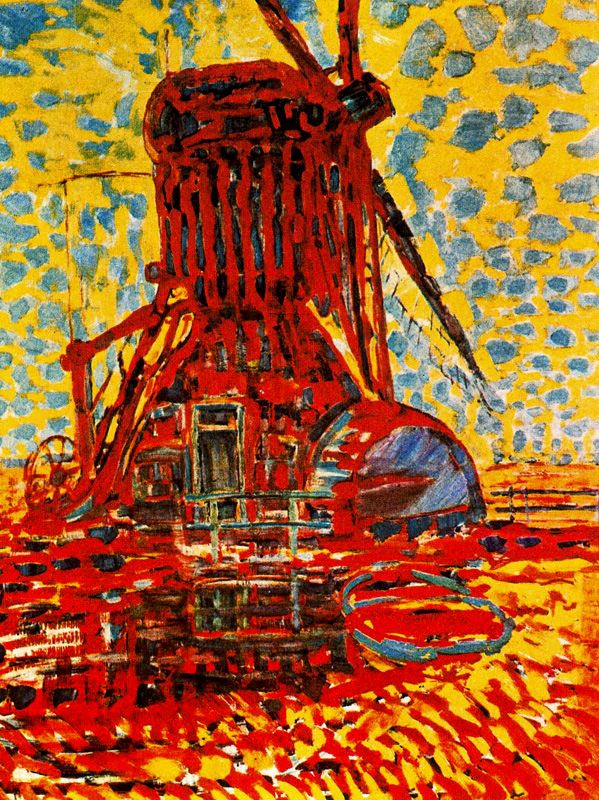log in
Enter site
Login to use Arthive functionality to the maximum
Windmill in sunlight
Piet Mondrian • Painting, 1908, 114×87 cm
Description of the artwork «Windmill in sunlight»
One of the most frequently recurring motifs in the early works of Mondrian – mill. That, however, it is not surprising for an artist who was born and lived a considerable part of the life in the Netherlands. Another object was lighthouse in Westkapellethat Mondrian portrayed in different styles and techniques, experimenting with them in his time Monetwith numerous haystacks in different light. Mill the Mondrian started to write before the experiments, innovations and discoveries. But then, yielding to the influence of the Theosophists, he gravitated to the image of these cruciform structures. "Mill in sunlight" became one of the most famous of the artist's works, marking a milestone in his work. The canvas is very similar to the work of luminato, – a bright, Sunny chord, created by using only one of the triad of primary colors.
Dutch painting influenced the early works of Mondrian, was far from understanding of color. Most Dutch artists of the XIX century preferred tonalism in which the nuances and shades was more important than the color itself. Perhaps only Vincent van Gogh was able to go beyond this tradition. But in the early twentieth century the situation changed. In 1907 a friend of Mondrian Yang Slatersbrought from France the new fashion trends – pointillismand Fauvism.
For the whole of European art of the early twentieth century, and Mondrian in particular focus primarily on the color was the first step to upgrade. Before turning to the question of form, European painting finds a new vision of reality through expressive colors. But it is interesting that at the same time when Mondrian is fond of color, in France Pablo Picassoand Georges Braqueturn to the new vision formthat would later become so important for Mondrian.
Author: Eugene Sidelnikov
Dutch painting influenced the early works of Mondrian, was far from understanding of color. Most Dutch artists of the XIX century preferred tonalism in which the nuances and shades was more important than the color itself. Perhaps only Vincent van Gogh was able to go beyond this tradition. But in the early twentieth century the situation changed. In 1907 a friend of Mondrian Yang Slatersbrought from France the new fashion trends – pointillismand Fauvism.
For the whole of European art of the early twentieth century, and Mondrian in particular focus primarily on the color was the first step to upgrade. Before turning to the question of form, European painting finds a new vision of reality through expressive colors. But it is interesting that at the same time when Mondrian is fond of color, in France Pablo Picassoand Georges Braqueturn to the new vision formthat would later become so important for Mondrian.
Author: Eugene Sidelnikov



